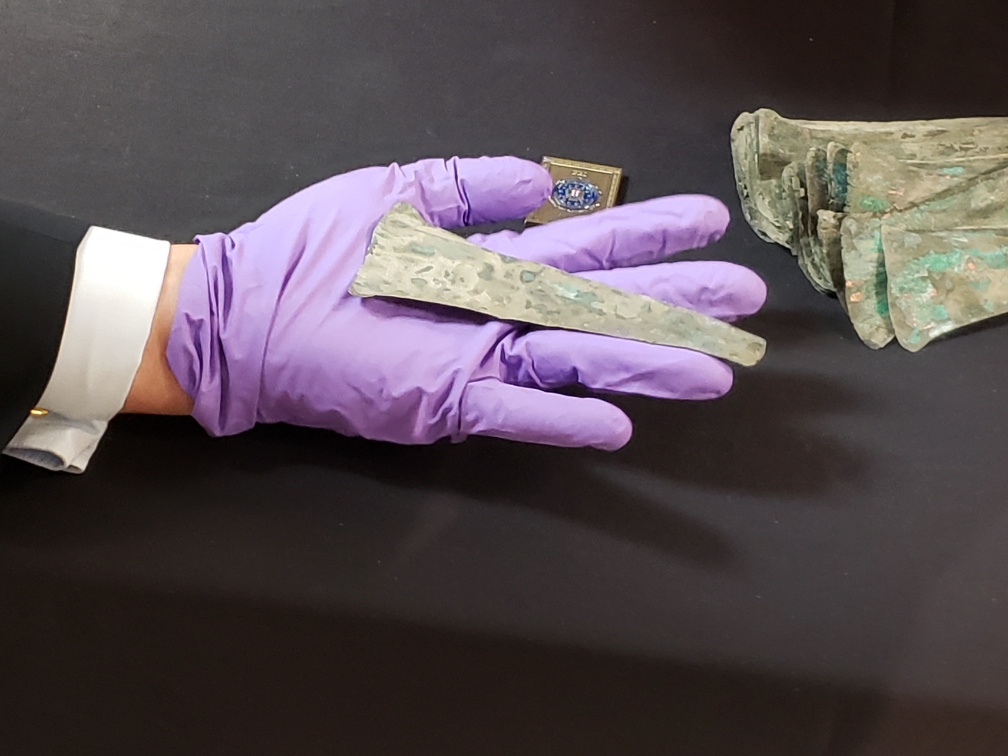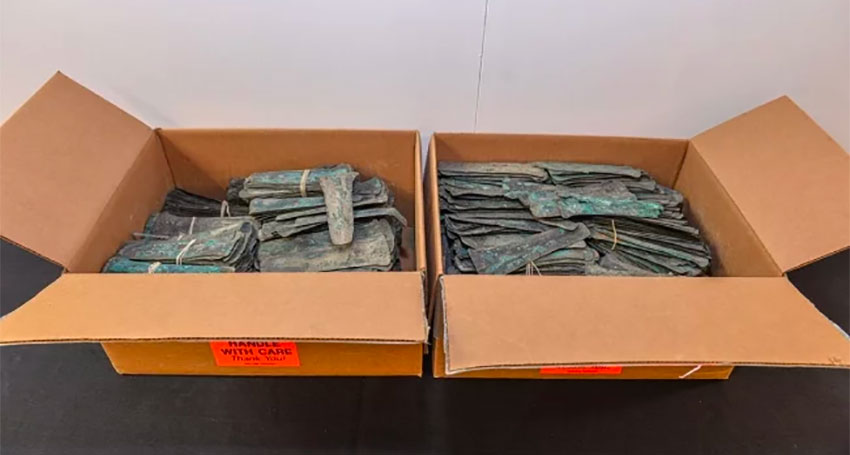More Than 3,500 Copper Coins Repatriated to Mexico
3,500 tongue-like copper coins were handed over to Mexican authorities in the United States. Mexico daily news Reported.

The Mexican Consulate Jessica Cascante in Miami said the coins are thought to have been used in what are now the southwestern Mexican states of Guerrero and Michoacán between A.D. 1200 and 1500.
The United States returned a collection of over 3,500 pre-Hispanic copper coins to Mexican authorities in a ceremony in Miami on Monday.
A U.S. collector acquired them in Texas at a numismatic fair in the 1960s, she said, but at that time neither Mexico nor the United States was part of a UNESCO convention that guarantees the return of such heritage artifacts to their countries of origin.
Cascante said the fragile, tongue-shaped coins, which are currently covered in verdigris, will be sent to Mexico in January.
Agents of the U.S. Federal Bureau of Investigations (FBI) who headed the operation to recover the coins attended the presentation ceremony along with the Consul General of Mexico in Miami, Jonathan Chait.

Mexican authorities notified the FBI of the existence of the coins in 2013 when they were taken to Spain for an auction.
Mexico’s National Institute of Anthropology and History (INAH) then began authenticating the coins in order to request their return.
As both countries were by then signatories to the UNESCO convention (Mexico in 1972 and the United States in 1983), the return process was completed six years later.
Cascante did not divulge the name of the collector who obtained the coins in the 1960s, but said that he did so before it constituted a crime and turned them involuntarily.
“Now we’re just waiting for the physical material to arrive [in Mexico],” she said, adding that they are currently being packaged with the support of specialists from history museums in Florida.





